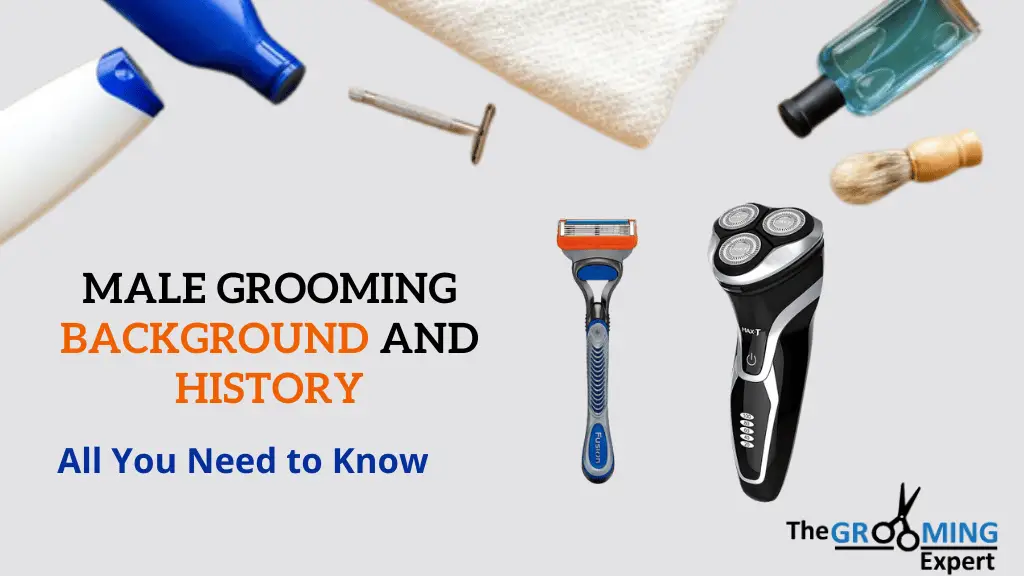The history of men’s grooming goes back over 4,000 years. Some cultures have had a different way of thinking about hair and skin than others. For example, the Romans considered hair a sign of status and beauty. However, today’s cultures may have a different view.
The Greeks and Romans believed that hair and skin were two parts of the body that should be kept clean and free from dirt, dust, and pollution. In ancient times, hair and skin were kept clean by washing them with water. However, some cultures have different beliefs about how to keep the body’s hair and skin clean.
In some cultures, the hair is considered more “dirty” than the skin. People in these cultures believe that hair should be kept clean by washing it with soap and water or brushing it. However, some cultures have different views about how to keep hair and skin clean. In some cultures, the hair is considered less dirty than the skin.
In these cultures, people believe that hair and skin should be kept clean by washing them with soap and water or brushing them. Other cultures, people believe that the hair and skin should be kept clean by bathing them with soap and water. Some of these cultures have different beliefs about how to keep the body’s hair and skin clean.
Men’s grooming routine
Men’s grooming routine is a necessary part of any man’s grooming routine, and Male grooming has been a part of human culture for as long as humans have been able to groom themselves. In ancient Greece, men shave their heads and bodies to become more presentable in public. In ancient Rome, men kept their beards and hair trimmed to appear more manly.
In the Middle Ages, shaving was common for monks and nobles. By the 15th century, it was common for upper-class Englishmen to shave their beards. In the United States, men started shaving for aesthetic and grooming reasons in the 19th century.
In 1892, the American Barber Association was founded to promote safe barbershops, and in 1900, Charles P. The concept of shaving pubic hair in the 1800s was revolutionized and changed much. The invention of the safety razor and its development in the 19th century revolutionized shaving. It allowed men to shave with a single stroke without getting cuts or nicks, allowing many more men to take up the practice. Shaving is a form of body modification. The most common form of shaving involves using razors but includes waxing, electrolysis, and laser hair removal.
In China, men would use a particular type of brush called a “chewing brush” to groom their teeth and gums. In Western cultures, men would use a comb to brush their hair and body. Modern men often use a small brush called a “shaver” or “beard trimmer” to shave their faces and bodies. The appearance of the face is significant for both genders. Today, male grooming is still a widespread practice in many cultures worldwide.
In the United States, male grooming is a cultural practice often associated with sports teams and organizations. Male grooming is also a part of self-identity. Many believe that a man’s appearance reflects his style and personality, and his clothing choices are often part of how he defines himself. Men often hide their body parts, so when they show them, they dress more conservatively than women.
Also Read: How to Grow Beard on Cheeks Naturally
Men will shave their body hair
Some men will shave their body hair, and some may not. Some men choose to wear makeup and shave their eyebrows. In some cultures, the procedure of ablution before a ritual bath is referred to as “shaving.” In other societies, shaving the body is not shared. The concept of “manliness” has been enhanced in recent decades by the rise of macho culture and increased bodybuilding and anti-feminism. In this context, “manliness” can be understood as a broader sense of masculinity or virility.
Male grooming is a ritual that helps keep a man looking his best. Grooming is an essential part of the male anatomy and can help improve hygiene, remove hair from around the eyes, and give a man a more polished appearance. The history of male grooming is long and complex, dating back to before civilization was even formed.
Male grooming is a common practice in many cultures and has a long history. In some cultures, men have traditionally shaved their heads or trimmed their hair to look more appealing to women. Other, people may use different grooming techniques to clean and keep their skin looking smooth.
In the United States and Europe, men have traditionally shaved their heads. This practice is not universal; other cultural influences may have influenced the shaving of a man’s head. In some countries, men may use different hairstyles to achieve a more polished appearance or to hide bald spots.
Also Read: What Is a Male Grooming Expert? Complete Grooming Guide
History of Male Shaving
Shaving is an essential part of manhood that has been practiced for centuries. Untrained men did the first shaving, and getting a man’s face smooth has been considered significant for many centuries. Male shaving has been an ancient custom, but it is unclear when and why it became widespread.
The earliest record of a man shaving his head was by historian Eutropius in the first century AD. Shaving became common in European courts and universities in the fourteenth century. The first written reference to “shaving” was in a 1348 manuscript by Albrecht von Hohenstaufen, Duke of Bavaria.
Men have traditionally shaved their heads to look more attractive to women. In some cultures, men have traditionally trimmed their hair to look more appealing to women. In other cultures, people may use different grooming techniques to clean and keep their skin looking smooth.
The process of shaving is often considered one of the most complex and time-consuming tasks a man can undertake. However, it is also one of the most rewarding. Shaving can give you a more gentleman-like appearance and make you look older, wiser, and more successful. Shaving with proper male grooming products helps reduce your risk of skin cancer and other skin conditions.
For male grooming guides, you can get our Male grooming guide pdf.

Meet Irwin Jolly, the grooming expert passionate about men’s grooming products. Irwin has been in the industry for years, and he’s tried and tested hundreds of grooming products to help men achieve their desired looks. Regarding grooming, skincare, and hair styling, Irwin knows what works and what doesn’t. His reviews are honest and thorough, and he doesn’t promote anything he hasn’t tried and tested. He believes grooming is essential to self-care, and he’s dedicated to helping men look and feel their best.


.png)
